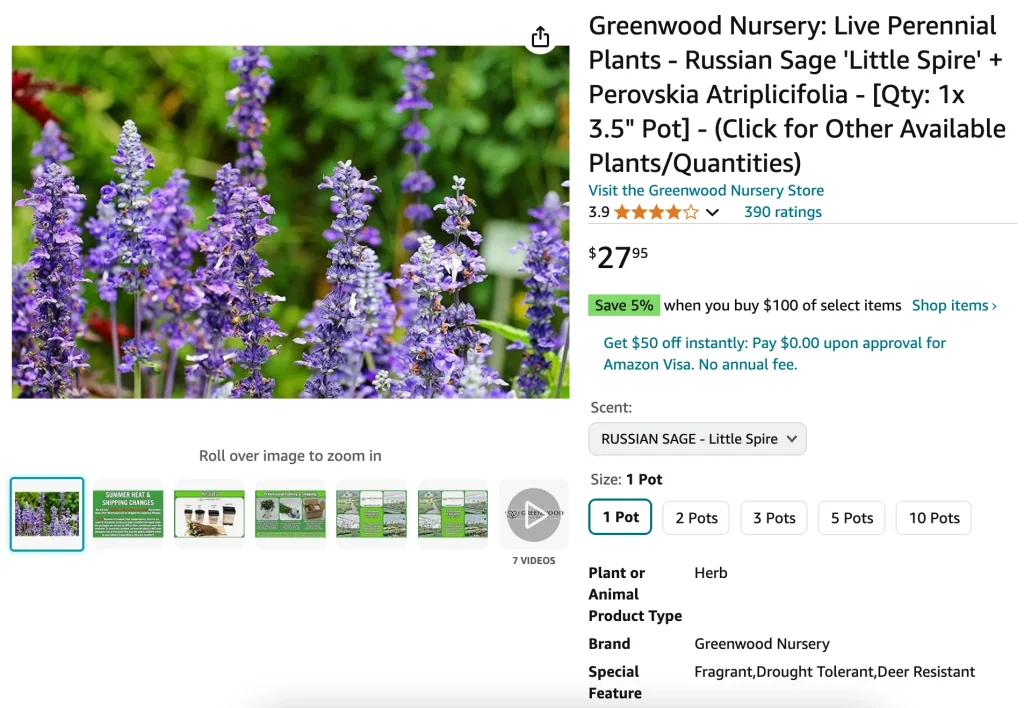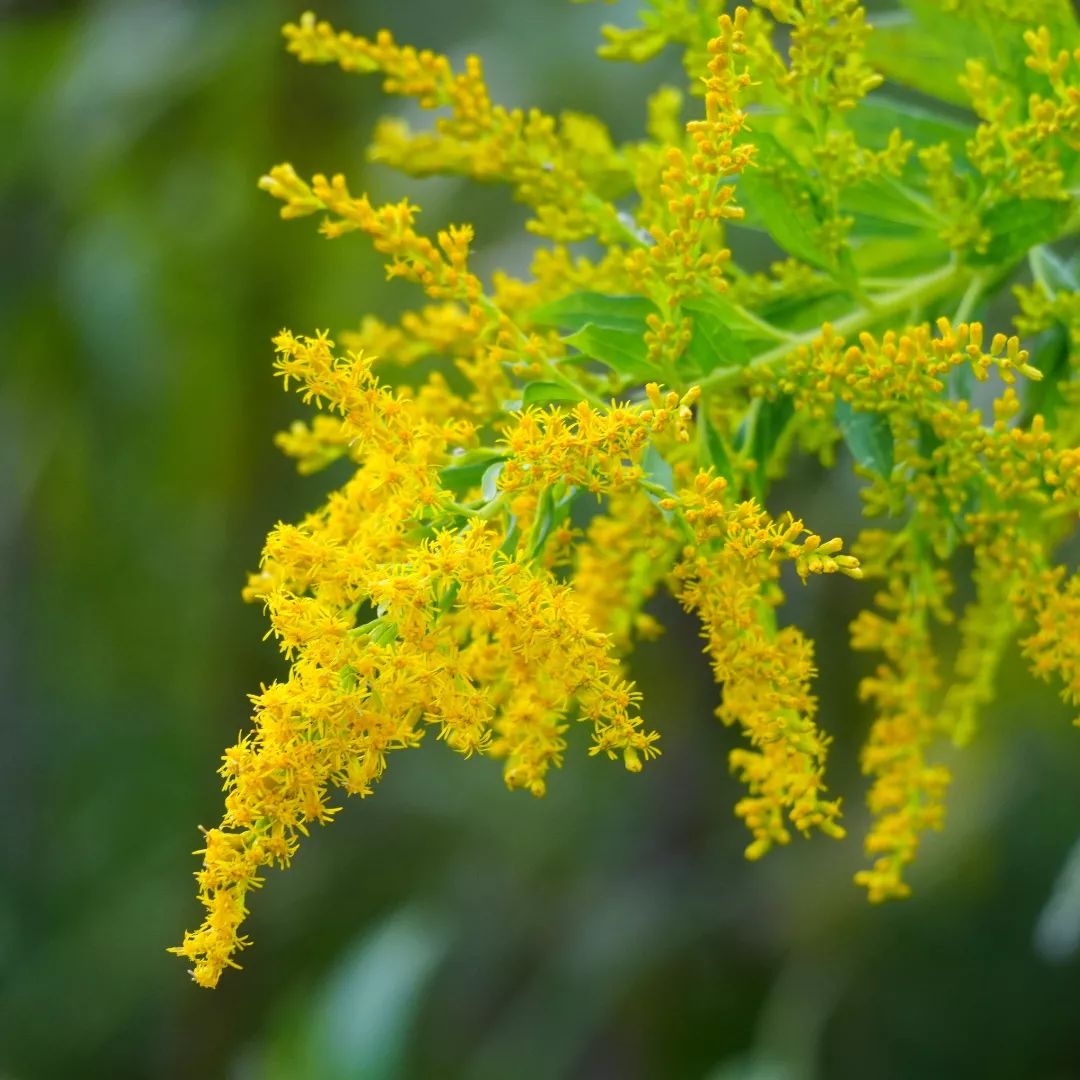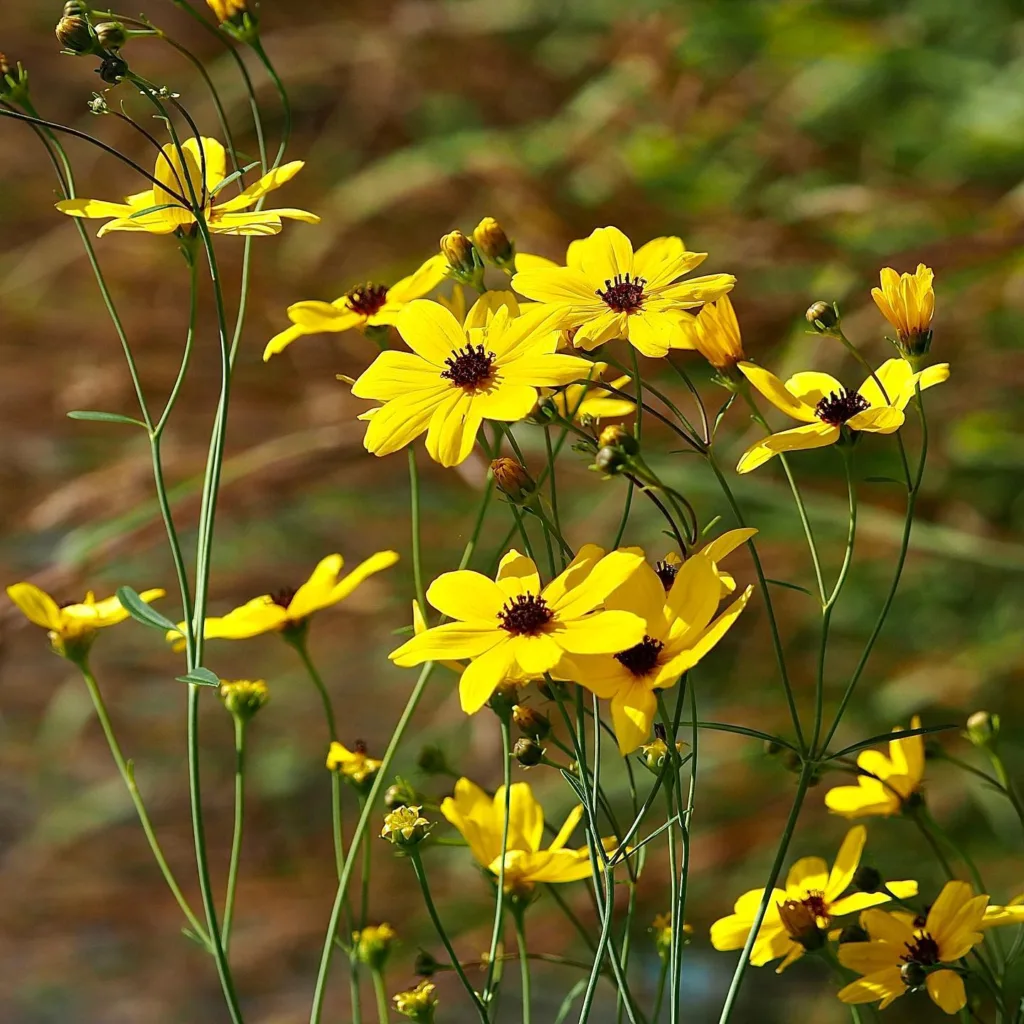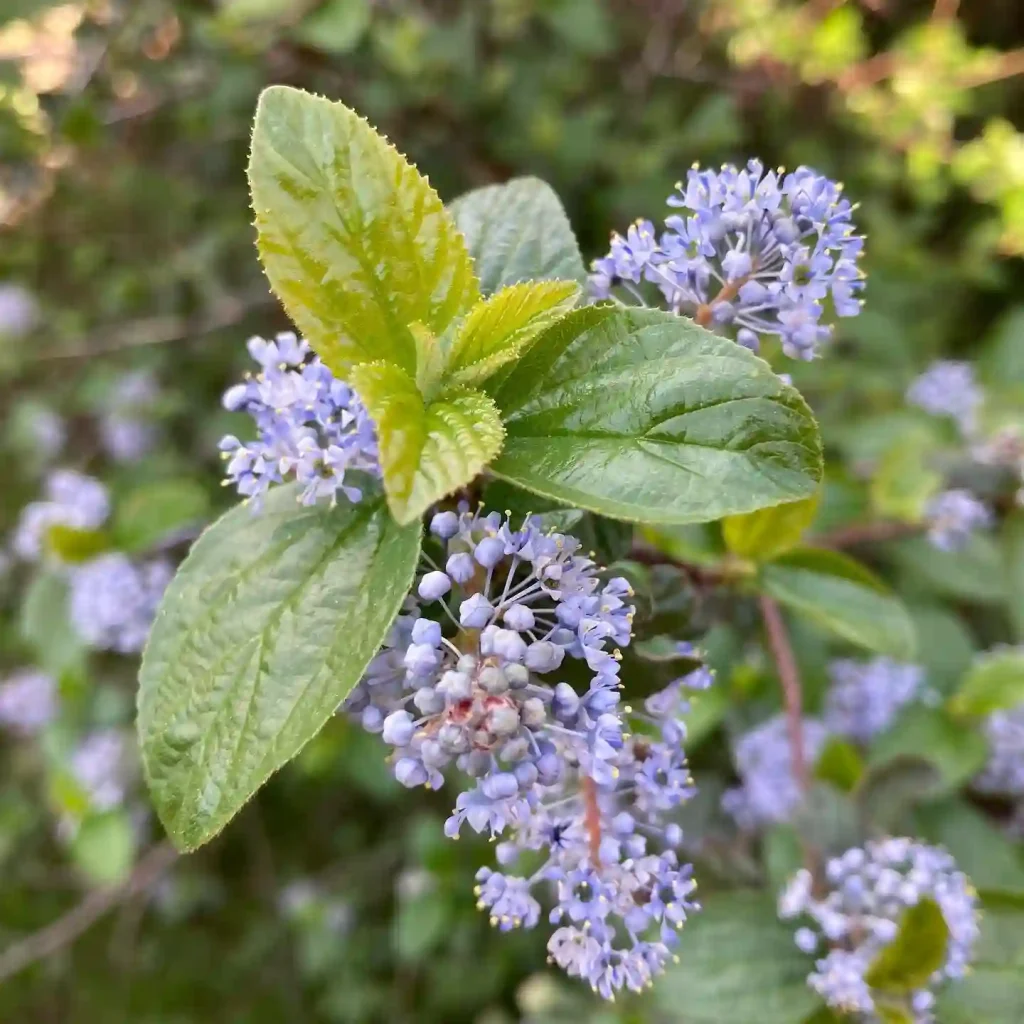
FAQs About Perovskia Little Spire
Perovskia Little Spire, often known as Russian Sage, is one of my favorite plants to grow. Its wispy, lavender-blue flowers and silvery foliage create a calming aesthetic in the garden. Below, I’ll answer some of the most common questions about this stunning perennial, based on my experience.
1050 Species in Genus Salvia
What is Perovskia Little Spire?
Perovskia Little Spire is a compact variety of Russian Sage. Unlike the taller traditional types, Little Spire grows to about 18-24 inches in height, making it perfect for smaller spaces. It features delicate, aromatic leaves with spires of lavender-blue flowers that bloom from mid-summer into early fall. This plant’s drought tolerance and deer resistance are what drew me to it initially, but its long-lasting blooms keep me hooked.
How to Care for Perovskia Little Spire?
Caring for Perovskia Little Spire is quite simple. It thrives in full sun and well-drained soil. I’ve found that it performs best in sandy or loamy soils with good drainage, but it can tolerate clay as long as it doesn’t stay waterlogged. In terms of watering, once established, it’s pretty drought-tolerant. I water mine deeply but infrequently, allowing the soil to dry out between waterings.
Pruning is an important part of maintaining its shape and promoting vigorous growth. In early spring, I trim it down to about 6-8 inches. This ensures that the plant doesn’t get too leggy and keeps it compact and tidy.
How to Propagate Perovskia Little Spire?
Propagating Perovskia Little Spire can be done through softwood cuttings or division. I’ve had the most success with softwood cuttings taken in early summer. Here’s what I do:
- I select a healthy stem that’s not too woody and cut a 4-6 inch section just below a leaf node.
- After stripping the lower leaves, I dip the cut end into rooting hormone to encourage faster root development.
- Then, I place the cutting into a pot filled with a mixture of perlite and potting soil, keeping it moist and in indirect light until roots form in about 4-6 weeks.
Division is another option, but since Little Spire stays relatively compact, I only divide mine every few years.
What to Plant with Perovskia Little Spire?
I love pairing Perovskia Little Spire with plants that share similar growing conditions, like other drought-tolerant, sun-loving species. Some of my favorite companions include lavender, salvia, and echinacea. These plants not only thrive alongside Perovskia but also complement its airy, lavender-blue flowers with bold colors and textures. I also like mixing it with ornamental grasses like feather reed grass or blue fescue for a soft, natural look.
Is Perovskia Little Spire Toxic?
Good news! Perovskia Little Spire is non-toxic to both pets and humans. This makes it a safe choice for gardeners who have children or pets roaming the yard. Its aromatic foliage might deter curious animals from nibbling on it, but if they do, there’s no cause for concern.
What Are the Benefits of Perovskia Little Spire?
Perovskia Little Spire offers numerous benefits for both garden aesthetics and wildlife. The long bloom period provides a reliable source of nectar for pollinators like bees and butterflies, making it an excellent addition to a pollinator garden. The plant’s drought tolerance also makes it a sustainable choice for areas with water restrictions or dry climates.
Aesthetically, its silver foliage and lavender flowers provide a soft, ethereal look to any landscape, particularly when used as a border or in mass plantings. It’s also a low-maintenance plant, requiring minimal watering and care once established.
What Are Common Problems with Perovskia Little Spire?
Perovskia Little Spire is generally a trouble-free plant, but there are a few issues you might encounter. One problem I’ve noticed is root rot, which happens when the plant is overwatered or grown in poorly draining soil. Ensuring good drainage is essential to avoid this.
Another minor issue is legginess if the plant isn’t pruned back in the spring. If left unpruned, the stems can grow tall and flop over, giving the plant a messy appearance. Pruning annually keeps it compact and upright.
How Does Perovskia Little Spire Compare with Other Similar Plants?
Perovskia Little Spire is often confused with lavender because of its similar appearance and color. However, while lavender has a stronger scent and a more mounded form, Perovskia is more upright and airy. Also, Perovskia is much more tolerant of clay soils and humidity, making it a better choice for regions where lavender might struggle.
Another similar plant is catmint (Nepeta), which also has purple flowers and silvery foliage. However, catmint blooms earlier in the season and has a more sprawling habit, while Perovskia Little Spire remains upright and blooms later, providing a nice succession of color in the garden.
How to Overwinter Perovskia Little Spire?
Perovskia Little Spire is hardy in USDA zones 5-9, so it generally doesn’t require much winter protection. In colder climates, I mulch around the base of the plant in late fall to protect the roots from freezing temperatures. I leave the stems standing through the winter and cut them back in early spring before new growth begins. This approach also adds winter interest to the garden, as the silvery stems look striking against a backdrop of snow.
Final Thoughts
Perovskia Little Spire is an easy-to-grow, versatile plant that offers a lot of value for minimal effort. Whether you’re looking for something low-maintenance, pollinator-friendly, or simply beautiful, this compact Russian Sage is an excellent choice. In my experience, it’s a plant that keeps giving, season after season, with very little fuss.
If i die, water my plants!



